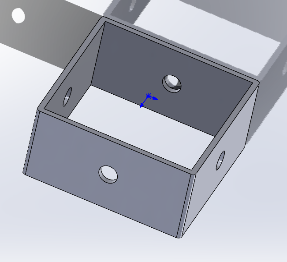

Volume 122
Published on July 2025Volume title: Proceedings of CONF-MPCS 2025 Symposium: Leveraging EVs and Machine Learning for Sustainable Energy Demand Management

Traditional soft robotic manipulators with circular cross-sections face inherent challenges in balancing flexibility and stiffness, particularly in precision-demanding applications such as medical and agricultural tasks. Inspired by the biomechanical superiority of the seahorse tail—characterized by its square-prismatic vertebral architecture and modular segmentation—this study proposes a novel variable-stiffness manipulator. The design integrates 3D-printed rigid skeletons (mimicking seahorse osteoderms) and silicone-based joints with embedded pneumatic airbags, enabling anisotropic stiffness modulation. Through finite element analysis (FEA) and multi-body dynamics simulations, the mechanical behavior was optimized, followed by experimental validation. Results demonstrated that increasing airbag pressure from 100 kPa to 200 kPa enhanced stiffness by 368% (from 4.92 N/mm to 23.04 N/mm), aligning with the hypothesized nonlinear pressure-stiffness relationship derived from hyperelastic silicone behavior. Static bending tests confirmed linear stress-displacement correlations (R²=0.987), validating the effectiveness of modular joints in dispersing stress concentrations while maintaining global stability. These outcomes directly address the initial hypothesis that square-prismatic geometry and pneumatic actuation can reconcile compliance and load-bearing capacity.

 View pdf
View pdf


Under the impetus of the "double - carbon" goal, wind power, as one of the main forms of new - energy power generation, has been growing in significance. However, the unpredictability of wind power output has presented difficulties for the secure and stable operation of the power system as well as real - time scheduling plans. Regarding the issues that the prediction of wind power output based on the traditional BP neural network has a slow convergence rate and is prone to getting trapped in local optima, this paper puts forward a hybrid wind - power prediction model (PSO - BP), where the BP neural network is enhanced by the particle - swarm optimization (PSO) algorithm. This approach optimizes the initial weights and thresholds of the BP neural network via the global search of the PSO algorithm. As a result, it enhances the model's convergence capacity and, to some degree, circumvents the problem of local optimality.Public wind - power datasets are utilized in the experiments. The PSO - BP and traditional BP models are trained and tested multiple times under the same circumstances. The outcomes indicate that, in comparison with the traditional BP model, the PSO - BP model, while ensuring the convergence speed, mitigates the local optimization issue of the neural network. It significantly improves the reliability and precision of the model's prediction results. Moreover, it offers robust technical backing for the short - term prediction of wind power, which is conducive to improving the power - system consumption plan and ensuring its safe operation.

 View pdf
View pdf




